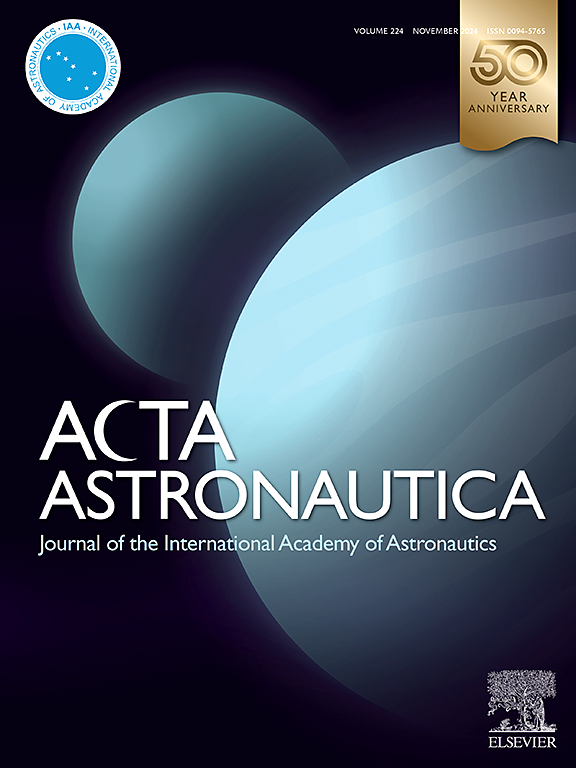Numerical study on flame stabilization by shock-induced in a supersonic combustor with parallel-cavity: Symmetric configuration
IF 3.1
2区 物理与天体物理
Q1 ENGINEERING, AEROSPACE
引用次数: 0
Abstract
Based on the base configuration (BC) of a supersonic combustor with parallel-cavity, a two-dimensional symmetric oblique shock configuration (OS) and a three-dimensional symmetric swept shock (SS) configuration are designed. The flame stabilization mode, local combustion mode and scatter plot for the three configurations are studied by large eddy simulation (LES). The computational results for BC are in good agreement with the experimental data and images. Compared to BC, analysis of the flame stabilization model reveals that the high temperature and subsonic zones are expanded and result in the heat release to move forward in OS and SS. The effect is most obvious in SS, but the total pressure loss is the highest. There are relatively few vortex cores and smaller scale of vortex structures in SS. A modified flame index introducing mixture fraction is proposed and the filter functions for the local combustion modes are developed. Quantitative analysis indicates that the total heat release power in SS is 304.7 kW, which is the largest for the three configurations; and the heat release power for its subsonic downstream-diffusion combined combustion mode is 118.7 kW, which is the most important local combustion mode. The scatter plot shows the most pronounced effects of heat release concentrated and forward moved, mixture fraction space distribution reduced and OH backward moved in SS.
平行腔型超音速燃烧室内激波稳定火焰的数值研究:对称结构
基于超声速平行腔燃烧室的基底构型(BC),设计了二维对称斜激波构型(OS)和三维对称掠激波构型(SS)。采用大涡模拟方法研究了三种构型的火焰稳定模式、局部燃烧模式和散点图。计算结果与实验数据和图像吻合较好。与BC相比,火焰稳定模型分析表明,OS和SS的高温区和亚音速区扩大,导致热量释放向前移动,其中SS的效果最明显,但总压损失最大。涡流中心相对较少,涡流结构规模较小。提出了引入混合分数的改进火焰指数,并开发了局部燃烧模式的过滤函数。定量分析表明,SS的总放热功率为304.7 kW,是三种配置中最大的;亚音速下游-扩散复合燃烧模式的放热功率为118.7 kW,是最重要的局部燃烧模式。散点图显示,SS中放热集中、前移、混合分数空间分布减小、OH后移的影响最为显著。
本文章由计算机程序翻译,如有差异,请以英文原文为准。
求助全文
约1分钟内获得全文
求助全文
来源期刊

Acta Astronautica
工程技术-工程:宇航
CiteScore
7.20
自引率
22.90%
发文量
599
审稿时长
53 days
期刊介绍:
Acta Astronautica is sponsored by the International Academy of Astronautics. Content is based on original contributions in all fields of basic, engineering, life and social space sciences and of space technology related to:
The peaceful scientific exploration of space,
Its exploitation for human welfare and progress,
Conception, design, development and operation of space-borne and Earth-based systems,
In addition to regular issues, the journal publishes selected proceedings of the annual International Astronautical Congress (IAC), transactions of the IAA and special issues on topics of current interest, such as microgravity, space station technology, geostationary orbits, and space economics. Other subject areas include satellite technology, space transportation and communications, space energy, power and propulsion, astrodynamics, extraterrestrial intelligence and Earth observations.
 求助内容:
求助内容: 应助结果提醒方式:
应助结果提醒方式:


